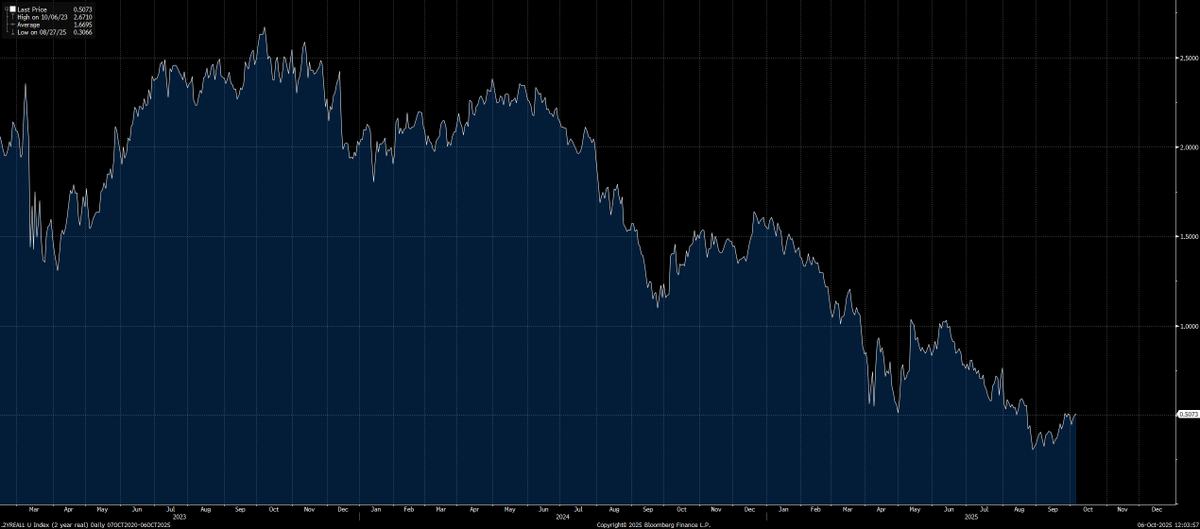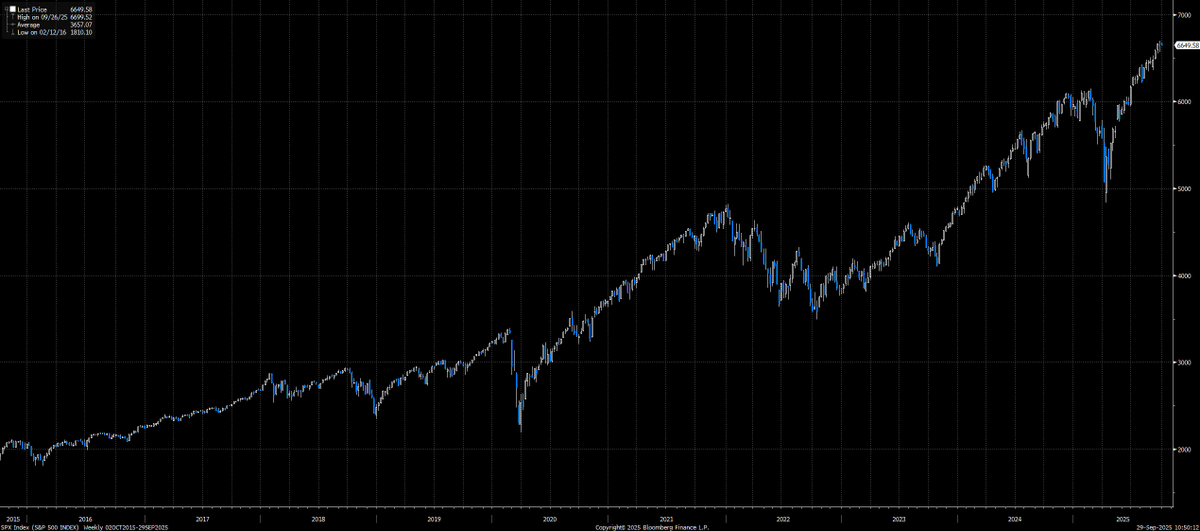How Are Tariffs Impacting Positioning and The Macro Regime 🧵
Is this a one-time volatility spike or the beginning of something larger?
Mapping the macro regime and its connection to tariffs sets the stage for everything moving into the end of the week 👇
Is this a one-time volatility spike or the beginning of something larger?
Mapping the macro regime and its connection to tariffs sets the stage for everything moving into the end of the week 👇

If you have been following me for any period of time you know that I have been bullish stocks and neutral bonds on a cyclical basis. This is being driven by the credit cycle, procyclical monetary+fiscal policy, and the entire wall of money from AI.
Was I long stocks going into Friday? Yes, 100%. If I had known the tariff news was coming out or that degree of a move would take place, I would have put on a short-term hedge.
https://x.com/Globalflows/status/1976433580722245991
I took a drawdown but as I laid out in the report on Friday, I remain bullish. These type of tariff shocks continue to create positioning unwinds as opposed to fundamentally changing the macro forces in the regime. The fact that everyone in the trading community is so aware of the tariff dynamics now after Q1 further decreases the probability of us having a Q1 like event driven purely by tariffs.
x.com/Globalflows/st…
x.com/Globalflows/st…
The period of time we are in right now remains incredibly bullish from a cyclical perspective. I laid out all of this in the video here:
https://x.com/Globalflows/status/1975269297380589790
And in the bigger picture report here:
https://x.com/Globalflows/status/1976048759034479055
WE ARE NOT SEEING FUNDAMENTAL CHANGES IN THE MACRO DRIVERS OF THE CREDIT CYCLE.
This is very clear!
This is very clear!
With that being said, understanding the connect of tariffs and macro liquidity will be THE KEY to map how any risks from tariffs impact markets. This is what I laid out in the report here and I want to cover several important things:
https://x.com/Globalflows/status/1977212030219436345
First, in the report I noted" This collective obsession is distracting from the most significant risk in the global system: cross-border flows. Tariffs are tied not only to trade relationships and geopolitics, but also to HOW MUCH capital foreign investors can allocate to US equities. This core misunderstanding explains WHY tariff headlines trigger equity selloffs and HOW they reshape global liquidity flows. (Chart below shows foreign direct investment into the United States)"
x.com/Globalflows/st…
x.com/Globalflows/st…

THis is not about valuations. This is 100% about flows of capital. Valuations do not set the upper limit of equities; it is the constraints of liquidity that push capital into equities. 

After the short term volatility blow out from Friday, we have snapped back almost completely in the index.
https://x.com/Tyler_Neville_/status/1977520804829990914
We had a liquidation of positioning that mean reverted in the next trading session within a macro regime that is pumping money into the market. This is very bullish.
I remain bullish on equities and broad risk assets. The key thing to map will be how the rotations around macro changes and positioning develop, especially with some risks building in Japan right now (notice JGBs are rallying right now)
I remain bullish on equities and broad risk assets. The key thing to map will be how the rotations around macro changes and positioning develop, especially with some risks building in Japan right now (notice JGBs are rallying right now)

I will be breaking down this connection further in a report today for subscribers here: capitalflowsresearch.com
• • •
Missing some Tweet in this thread? You can try to
force a refresh
















